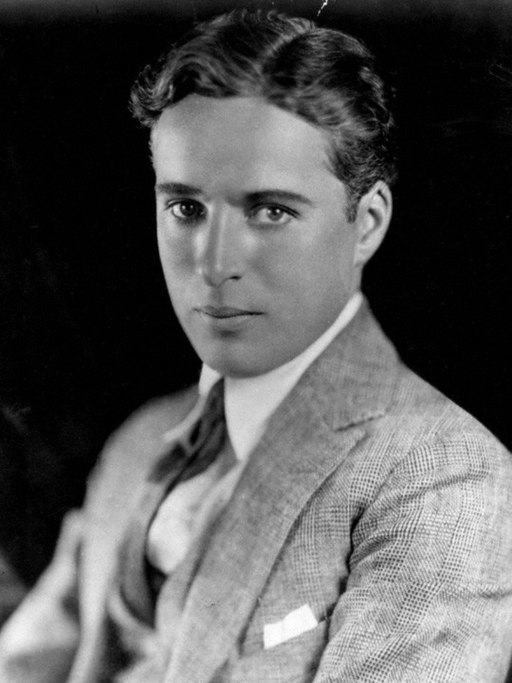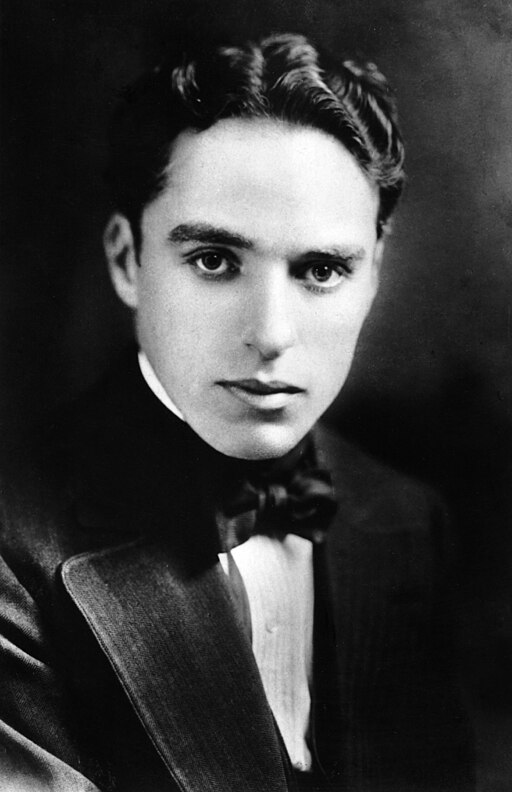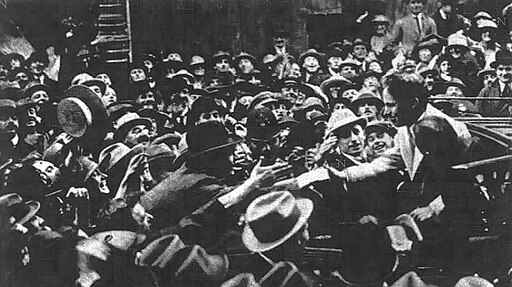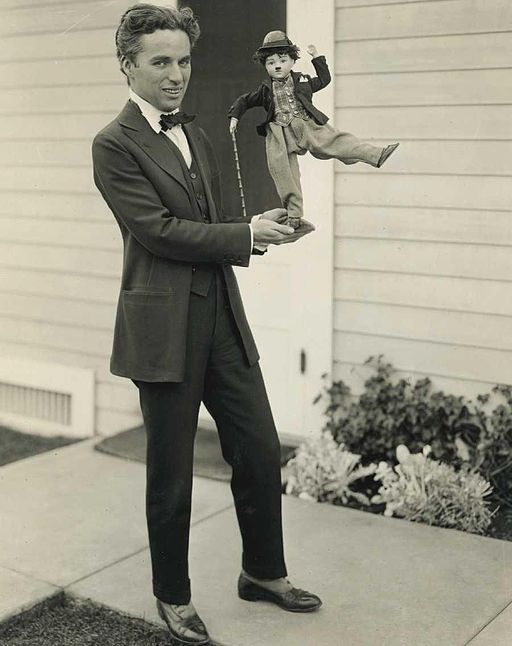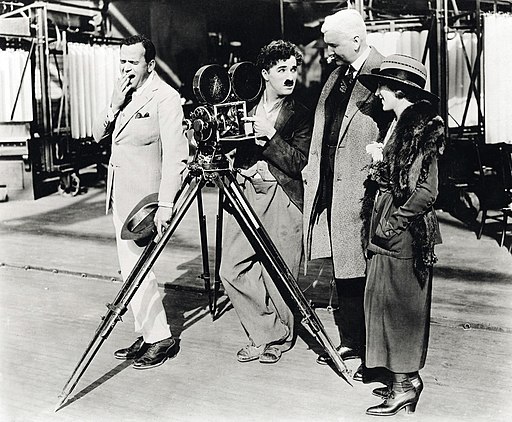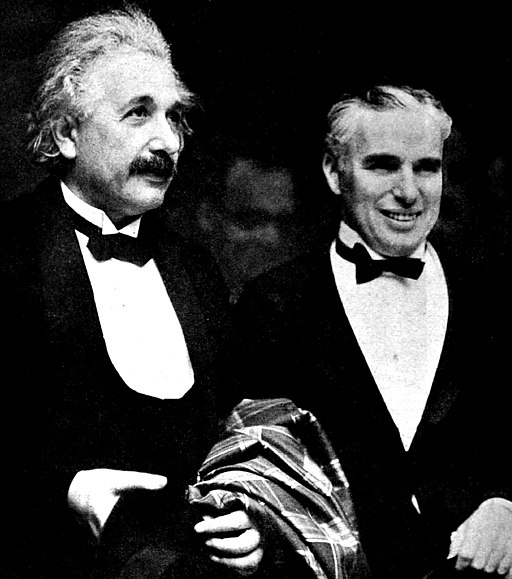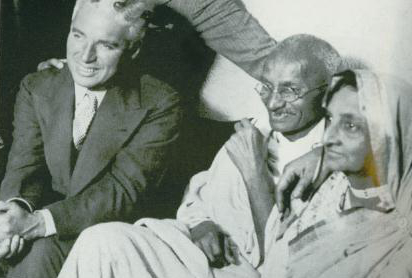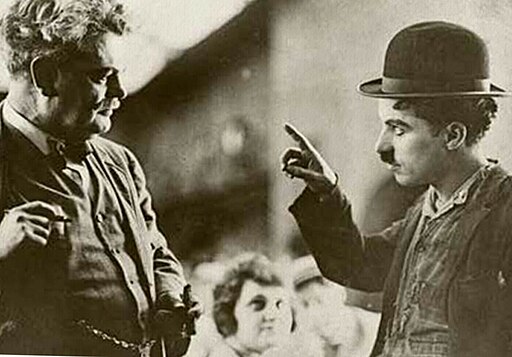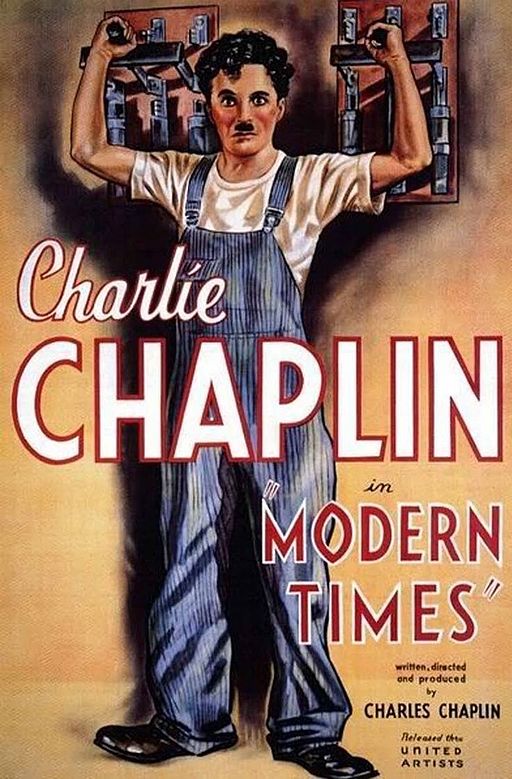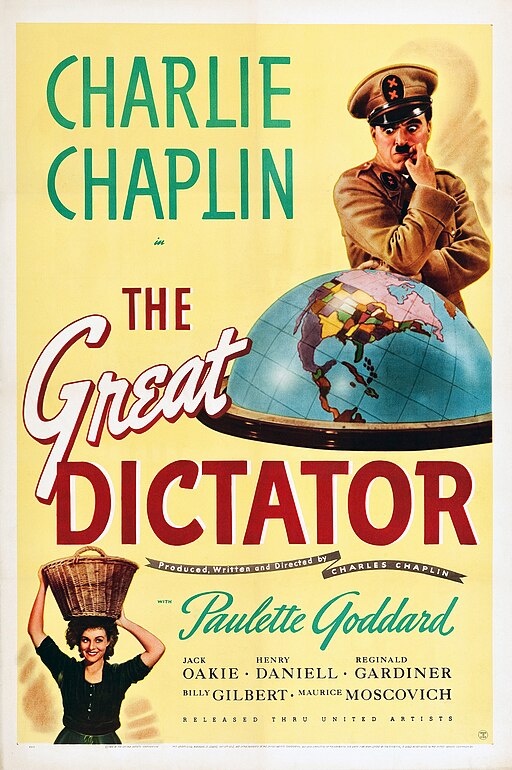Charlie Chaplin
back| Full Name | Charles Spencer Chaplin |
| Stage Name | Charlie Chaplin |
| Born | April 16, 1889 |
| Birthplace | Walworth, London, England |
| Died | December 25, 1977 |
| Buried | Corsier-sur-Vevey Cemetery, Vaud, Switzerland |
| Married to | Mildred Harris (1918–1920) - Lita Grey (1924–1927) - Paulette Goddard (1936–1942) - Oona O'Neill (1943–1977, his death) |
| Children | Norman Chaplin (with Mildred Harris, died in infancy) - Charles Chaplin Jr. - Sydney Earle Chaplin (with Lita Grey) - Geraldine Chaplin - Michael Chaplin - Josephine Chaplin - Victoria Chaplin - Eugene Chaplin - Jane Chaplin - Annette Emily Chaplin - Christopher James Chaplin (with Oona O'Neill) |
| Notable films | The Kid (1921) - The Gold Rush (1925) - City Lights (1931) - Modern Times (1936) - The Great Dictator (1940) - Monsieur Verdoux (1947) - Limelight (1952) |
Charlie Chaplin
The cinematic maestro of humor and heart
Charlie Chaplin, born in London in 1889, rose from a poverty-stricken childhood to become one of the most iconic figures in the history of cinema. A master of silent film, he is best known for his character "The Tramp," whose blend of humor and humanity captivated audiences worldwide.
Chaplin's career spanned over 75 years, from the Victorian stage to the advent of talkies. His most famous films include "The Kid" (1921), "The Gold Rush" (1925), "City Lights" (1931), "Modern Times" (1936), and "The Great Dictator" (1940). A co-founder of United Artists, Chaplin had significant control over his productions.
Related
Charlie Chaplin
Biography and Analysis of his Career
Early Life:
- Born into a family of entertainers, Chaplin's childhood was fraught with poverty and hardship. His father was a vocalist and actor, and his mother, known under the stage name Lily Harley, was an actress and singer. Unfortunately, his father's early death and mother's mental illness forced Chaplin into a life of workhouses and child labor.
Career Beginnings:
- Chaplin's career in show business began early. At the age of 5, he made his stage debut, filling in for his mother. By the age of 14, he was a seasoned performer and joined the Eight Lancashire Lads, a clog-dancing troupe. His early years in vaudeville and music halls shaped his future in comedy and film.
Film Career and Hollywood:
- Chaplin's move to the United States in 1910 with the Fred Karno Repertoire Company was a turning point. He began his film career in 1914 with Keystone Studios, quickly rising to fame. His character "The Tramp" became an iconic figure in the silent film era.
- Chaplin co-founded the distribution company United Artists in 1919, which gave him complete control over his films. His works often combined comedy with a critical view of society and human nature.
Later Years and Legacy:
- Facing controversy and political accusations during the McCarthy era, Chaplin left the United States for Switzerland in 1952. He continued to make films, including "A King in New York" (1957) and "A Countess from Hong Kong" (1967).
- Chaplin's impact on the film industry is immeasurable. He was a pioneer in both comedy and filmmaking, known for his ability to blend slapstick with poignant commentary on human conditions.
- In 1972, Chaplin returned to the U.S. to receive an Honorary Academy Award for "the incalculable effect he has had in making motion pictures the art form of this century."
- Chaplin died on Christmas Day in 1977, leaving behind a legacy as one of the most influential figures in the history of cinema.
Video, Boxing Match from "The Kid" (1933):
Analysis of Charlie Chaplin’s Acting Style:
Charlie Chaplin's acting style is a remarkable blend of physical comedy, emotional depth, and social commentary, making him one of the most influential figures in the history of cinema. His style evolved over the years, but several key elements remained consistent:
Physical Comedy and Mime:
- Chaplin was a master of physical comedy, with a unique ability to convey a wide range of emotions and stories through his body movements alone. His background in vaudeville and mime greatly influenced his film performances.
- His movements were exaggerated yet precise, often characterized by a balletic grace. He could transform simple actions like walking, falling, or twirling a cane into comedic art.
- The Tramp character, with his iconic shuffling walk, baggy trousers, tight coat, bowler hat, and small mustache, became a globally recognized symbol of humor and humanity, largely due to Chaplin's expressive physicality.
Facial Expressions:
- In the silent film era, where dialogue was absent, Chaplin's ability to convey complex emotions through facial expressions was crucial. He had an extraordinarily expressive face, capable of shifting rapidly from joy to sorrow, from innocence to slyness.
- His eyes played a significant role in his performances. They could display a wide emotional range, from comedic surprise to profound sadness, often conveying more than words ever could.
Timing and Rhythm:
- Chaplin had impeccable comedic timing. He knew precisely how long to hold a pose, when to deliver a gag, and when to transition from one emotion to another. This sense of timing made his comedy both surprising and effective.
- The rhythm in his movements and the choreographed sequences (like the dance of the bread rolls in "The Gold Rush") were almost musical, adding a lyrical quality to his performances.
Pathos and Depth:
- Chaplin's acting was not just about making people laugh; it also had a depth that evoked empathy. He often portrayed the underdog – the marginalized, the poor – with great sensitivity and warmth.
- His films frequently contained social and political commentary, reflecting his views on poverty, inequality, industrialization, and authoritarianism. His ability to blend humor with touching moments of sadness or critique was groundbreaking.
Improvisation and Creativity:
- Many of Chaplin's most famous scenes were the result of improvisation. He was known for his perfectionism and would often shoot a single scene scores of times until he achieved what he envisioned.
- His creativity extended to writing, directing, and music composition, further enhancing the emotional impact of his performances.
Use of Props and Environment:
- Chaplin was adept at using props in inventive ways. Everyday objects in his hands could become sources of humor or symbols with deeper meanings.
- He interacted seamlessly with his environment, whether it was a simple stage set or a more elaborate backdrop, using it to enhance his physical comedy and storytelling.
Evolution Over Time:
- While Chaplin is best known for his silent film performances, he also adapted to talkies, showing that his talents were not limited to physical comedy. His later films incorporated dialogue but maintained his distinctive style and continued to focus on humanistic themes.
In summary, Charlie Chaplin's acting style was a unique combination of physical agility, emotional expressiveness, impeccable comedic timing, and social consciousness. He was not just an actor but a storyteller who could engage audiences without uttering a single word. His legacy lives on, not only in his films but in the countless performers and filmmakers he influenced.
Scene from "The Great Dictator", the Barber Shop:
Trivia
A] Was Charlie Chaplin Jewish?
Charlie Chaplin was not Jewish. He was born into a Christian family in London, England. His mother, Hannah Chaplin, was of Irish descent, and his father, Charles Chaplin Sr., was of English descent.
There has been some speculation about Chaplin's heritage due to the themes of his film "The Great Dictator," in which he satirized Adolf Hitler and Nazism, and also because of his strong stance against fascism and anti-Semitism.
However, there is no evidence to suggest that Chaplin was of Jewish descent. His empathetic portrayal of a Jewish barber in "The Great Dictator" was more a testament to his solidarity with the Jewish community and his opposition to oppression and racism.
B] How Tall was Charlie Chaplin?
Charlie Chaplin was approximately 5 feet 5 inches (165 cm) tall. His relatively small stature contributed to the underdog persona of his famous character, The Tramp, making him appear more vulnerable and relatable to his audience.
C] The Charlie Chaplin Cane:
Charlie Chaplin's cane is an iconic part of his "Tramp" character and is as recognizable as his bowler hat, mustache, and shuffling walk. This cane wasn't just a prop; it played a significant role in Chaplin's physical comedy and the persona of the Tramp. Here are some key points about the Charlie Chaplin cane:
- Type of Cane: The cane used by Chaplin is a type of walking stick known as a "bamboo cane." It was lightweight, flexible, and typically made of bamboo, which allowed Chaplin to perform various comedic stunts and movements with ease.
- Symbolism: The cane symbolized the elegance and dignity Chaplin sought to bring to his Tramp character. Despite the Tramp's shabby appearance and status as a vagabond, the cane added a touch of sophistication, humorously contrasting with his otherwise disheveled look.
- Physical Comedy Tool: Chaplin skillfully used the cane as an extension of his body in his performances. It was integral to his slapstick routines, aiding in physical gags, comedic timing, and expressive gestures. He could spin, flip, and twirl the cane in a way that added to the visual humor of his acts.
- Iconic Status: Alongside the bowler hat and small mustache, the cane is instantly recognizable as part of the Tramp’s costume. It has become a symbol of silent film comedy and Chaplin’s genius in physical expression and comedic timing.
- Influence and Legacy: The image of Chaplin's Tramp character, complete with the cane, has had a lasting impact on popular culture and is often referenced or parodied in various forms of media. The cane represents not just a comedic prop but a piece of cinematic history.
D] Cause of Death:
Charlie Chaplin died of natural causes on December 25, 1977, at the age of 88. His death was specifically attributed to a stroke. He passed away at his home in Corsier-sur-Vevey, Switzerland, surrounded by his family.
E] Charlie Chaplin Shoes:
Charlie Chaplin's shoes, much like his cane and bowler hat, were an essential part of his iconic "Tramp" character and played a significant role in his performances. Here are some key aspects of Chaplin's shoes:
- Oversized and Distinctive: Chaplin's Tramp character often wore oversized, bulky shoes. This choice was not just for comedic effect; the large shoes added to the character's clumsy and comedic walking style, enhancing his physical humor.
- Part of the Character's Costume: The shoes, along with the baggy trousers, tight coat, bowler hat, and small mustache, created a distinctive and memorable look for the Tramp. This attire was carefully chosen by Chaplin to reflect the character's status as a sympathetic vagabond.
- Physical Comedy: The oversized nature of the shoes allowed Chaplin to perform his unique style of slapstick comedy. They played a role in his famous waddle and in scenes where he would comically stumble or perform elaborate physical routines. The awkward size of the shoes made his balancing acts and dance-like movements more humorous and challenging.
- Symbolism: Chaplin's choice of footwear for the Tramp was also symbolic. The shoes, being large and ill-fitting, highlighted the character's poverty and his status as an outsider. Yet, despite these setbacks, the Tramp character always tried to maintain his dignity and composure, which Chaplin conveyed through his skillful and graceful movements.
- Durability and Adaptability: The shoes needed to be durable to withstand the rigors of Chaplin's physical performance. They were an integral part of his act, and their design had to be both functional for the stunts and visually effective for the character.
Awards and Recognition:
Academy Awards
- 1929 (1st Academy Awards): Chaplin was originally nominated for Best Actor and Best Comedy Direction for "The Circus." However, his nominations were withdrawn and he was given a Special Award "for versatility and genius in acting, writing, directing, and producing 'The Circus.'"
- 1941 (13th Academy Awards): Nominated for Best Actor, Best Original Screenplay, and Best Picture for "The Great Dictator." He did not win in any of these categories.
- 1973 (45th Academy Awards): Received an Honorary Award "for the incalculable effect he has had in making motion pictures the art form of this century." This was a highly significant moment as it marked his return to the United States after two decades.
Other Notable Awards and Honors
- 1952: Chaplin was awarded the International Peace Prize.
- 1954 Venice Film Festival: Received a Special Jury Prize for "Limelight," in recognition of his overall achievements.
- 1964 British Academy Film Awards (BAFTA): Honored with the BAFTA Fellowship, the highest honor given by the British Academy of Film and Television Arts.
- 1965 Queen's Honours List: Chaplin was knighted by Queen Elizabeth II, becoming Sir Charles Spencer Chaplin.
- 1971 Cannes Film Festival: Chaplin's film "The Kid" was presented at the Cannes Classics section.
- 1972 National Board of Review, USA: Awarded the Career Achievement Award.
- 1972 New York Film Critics Circle Awards: Received a Special Award.
- 1972 Walk of Fame: Chaplin received a star on the Hollywood Walk of Fame for his contributions to the motion picture industry.
Posthumous Recognitions
- After his death, Chaplin continued to be celebrated and honored for his impact on the world of cinema:
- 1978: He was inducted into the Hall of Fame of the International Clown Hall of Fame.
- 1992: Chaplin was awarded a Star on the Walk of Fame at Leicester Square in London.
- 2002: Ranked #10 in the Greatest Male Stars of Classic American Cinema list by the American Film Institute.
Chaplin's influence extended beyond these awards, deeply impacting the art of filmmaking and inspiring generations of actors, directors, and comedians. His legacy in film and his contributions to the development of cinematic expression have made him a timeless icon in the entertainment industry.
Notable Quotes from Charlie Chaplin:
On Humanity and Love:
- "You'll never find a rainbow if you're looking down."
- "We think too much and feel too little. More than machinery, we need humanity; more than cleverness, we need kindness and gentleness."
- "The greatest thing you'll ever learn is just to love and be loved in return."
On Life and Happiness:
- "Life is a tragedy when seen in close-up, but a comedy in long-shot."
- "A day without laughter is a day wasted."
- "To truly laugh, you must be able to take your pain, and play with it!"
On Self-Reflection:
- "I always like walking in the rain, so no one can see me crying."
- "What do you want a meaning for? Life is a desire, not a meaning."
- "My pain may be the reason for somebody's laugh. But my laugh must never be the reason for somebody's pain."
On Art and Creativity:
- "Imagination means nothing without doing."
- "All I need to make a comedy is a park, a policeman and a pretty girl."
- "Art is a weapon that fights against the enemy called reality."
On Change and Progress:
- "Nothing is permanent in this wicked world - not even our troubles."
- "I am for people. I can't help it."
- "You have to believe in yourself. That's the secret."
From His Films:
- "In this world, there is room for everyone, and the good earth is rich and can provide for everyone." (From "The Great Dictator")
- "Despair is a narcotic. It lulls the mind into indifference." (From "Monsieur Verdoux")
Movies featuring Charlie Chaplin:
1914
- Making a Living: Chaplin's first film, where he plays a swindler who gets into a fight with a news reporter.
- Kid Auto Races at Venice: The first appearance of Chaplin's iconic Tramp character, interfering with a kids' car race.
- Mabel's Strange Predicament: Introduces Mabel Normand and features Chaplin as The Tramp getting into humorous situations in a hotel.
- Between Showers: Chaplin tries to help a woman cross a muddy street.
- A Film Johnnie: The Tramp character causes chaos at a film studio.
- Tango Tangles: Chaplin plays a tipsy dancer in this early slapstick.
- His Favorite Pastime: Chaplin's character, a drunk, pursues a woman.
- Cruel, Cruel Love: A rich lord (Chaplin) believes he has killed his lover in a botched suicide attempt.
- The Star Boarder: Chaplin is a favored lodger who gets into various antics.
- Mabel at the Wheel: Chaplin plays a villain who tries to sabotage Mabel's chance at winning a car race.
- Twenty Minutes of Love: Chaplin as a pickpocket in a park.
- Caught in a Cabaret: Chaplin impersonates a high-society man at a party.
- Caught in the Rain: A drunken Chaplin checks into a hotel causing trouble.
- A Busy Day: Chaplin as a woman getting into various troubles during a busy day.
- The Fatal Mallet: Three men vie for the affections of a woman.
- The Knockout: Chaplin has a small role in this boxing comedy.
- Mabel's Busy Day: Chaplin tries to help Mabel sell hot dogs at a race track.
- Mabel's Married Life: Mabel struggles with her abusive husband, played by Chaplin.
- Laughing Gas: Chaplin plays a dentist's assistant causing chaos in a dental office.
- The Property Man: Chaplin causes havoc backstage at a vaudeville theater.
- The Face on the Barroom Floor: A painter (Chaplin) relates his tragic story in a bar.
- Recreation: Chaplin's Tramp character tries to impress a girl in a park.
- The Masquerader: Chaplin plays an actor who dresses as a woman to trick a director.
- His New Profession: Chaplin takes care of a man in a wheelchair.
- The Rounders: Chaplin and Fatty Arbuckle play drunken men who cause trouble at a hotel.
- The New Janitor: Chaplin's character saves the day after he's fired as a janitor.
- Those Love Pangs: Chaplin and Chester Conklin fight over girls at a movie theater.
- Dough and Dynamite: Chaplin gets caught up in a bakers' strike.
- Gentlemen of Nerve: Chaplin and Mabel Normand at an auto race.
- His Musical Career: Chaplin as a piano mover.
- His Trysting Place: Mistaken identity and misplaced letters lead to marital issues.
- Tillie's Punctured Romance: Chaplin's first feature-length film, where he conspires with a woman to embezzle her wealthy father's money.
- Getting Acquainted: Chaplin's Tramp flirts with ladies in the park.
- His Prehistoric Past: Set in the Stone Age, Chaplin tries to take over as king.
1915
- His New Job: Chaplin's first film for Essanay Studios, where he causes chaos at a film studio.
- A Night Out: Chaplin and Ben Turpin's drunken adventures.
- The Champion: A boxing comedy where Chaplin's character finds a lucky horseshoe.
- In the Park: A day in the park leads to several comedic situations.
- A Jitney Elopement: Chaplin saves Edna from an unwanted marriage.
- The Tramp: Chaplin's character helps thwart a robbery, a pivotal film in defining the Tramp's character.
- By the Sea: A day at the seaside leads to a series of comic misadventures.
- His Regeneration: Chaplin in a brief cameo in this Broncho Billy Anderson film.
- Work: Chaplin struggles with various jobs in a house.
- A Woman: Chaplin disguises himself as a woman.
- The Bank: Chaplin plays a janitor in a bank who foils a robbery.
- Shanghaied: Chaplin is tricked into working on a ship with a plot to blow it up.
- A Night in the Show: Chaplin plays two characters causing havoc at a theater.
- Charlie Chaplin's Burlesque on Carmen: A parody of the opera "Carmen."
1916
- Police: Chaplin plays an ex-convict who gets involved in a burglary plot.
- The Floorwalker: Introduces large-scale slapstick, with Chaplin in a department store.
- The Fireman: Chaplin is an inept firefighter.
- The Vagabond: A street musician (Chaplin) rescues a girl from gypsies.
- One A.M.: A solo film where Chaplin struggles to get home drunk.
- The Count: Chaplin impersonates a count at a party.
- The Pawnshop: Chaplin works in a pawnshop, showcasing his physical comedy.
- Behind the Screen: A satire on the movie business, with Chaplin as a stagehand.
- The Rink: Chaplin shows off his roller-skating skills.
- Easy Street: Chaplin becomes a police officer in a tough neighborhood.
- The Cure: Chaplin attends a health spa with hilarious results.
- The Immigrant: A poignant film about immigrants coming to America.
- The Adventurer: Chaplin plays an escaped convict who becomes a hero.
1917
- The Bond: A propaganda film to support the Liberty Loan.
- Triple Trouble: A posthumous compilation of Chaplin's earlier works.
1918
- A Dog's Life: The Tramp and a dog team up to survive.
- The Shoulder Arms: Chaplin in the trenches of World War I.
- Sunnyside: Chaplin mixes surrealism with his slapstick comedy.
1919
- A Day's Pleasure: A day out with the family leads to various mishaps.
- The Professor: Chaplin plays a flea circus proprietor.
- The Kid: A landmark film where the Tramp cares for an abandoned child.
1921
- The Idle Class: Chaplin plays a dual role of a tramp and a wealthy man.
- Pay Day: Chaplin as a construction worker dealing with his nagging wife and work.
1922
- Nice and Friendly: A short, made as a wedding gift for Lord and Lady Mountbatten.
1923
- The Pilgrim: Chaplin as an escaped convict posing as a minister.
1925
- The Gold Rush: Chaplin's Tramp goes to Alaska in search of gold.
1928
- The Circus: The Tramp joins a circus and falls in love.
1931
- City Lights: The Tramp falls in love with a blind flower girl.
1936
- Modern Times: A satire on the industrialized world.
1940
- The Great Dictator: A bold satire on fascism, where Chaplin plays a dual role of a Jewish barber and a dictator.
1947
- Monsieur Verdoux: Chaplin plays a bluebeard character, a departure from the Tramp.
1952
- Limelight: A story of a washed-up comedian and a young dancer.
1957
- A King in New York: Satire on McCarthyism, with Chaplin playing a deposed king in New York.
1967
- A Countess from Hong Kong: Chaplin's last film, a romantic comedy starring Marlon Brando and Sophia Loren.

